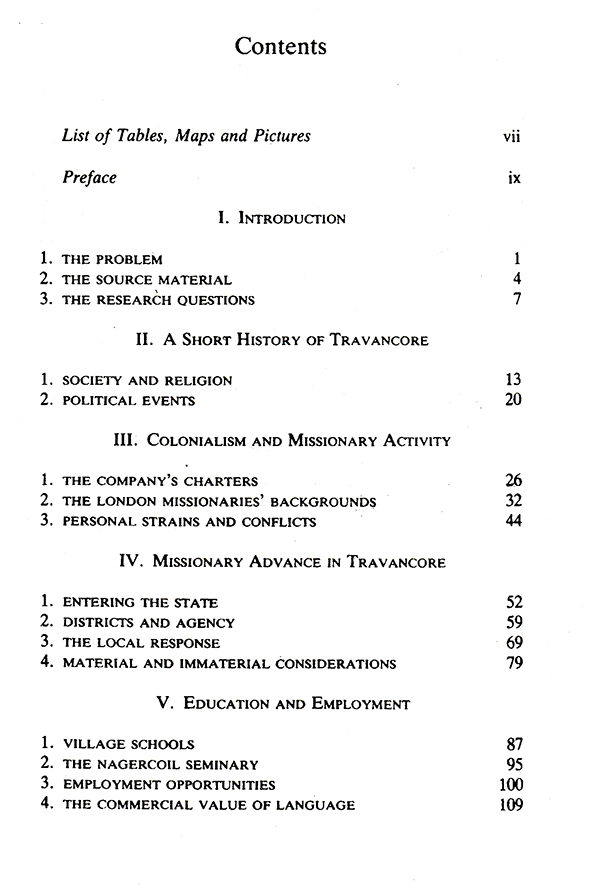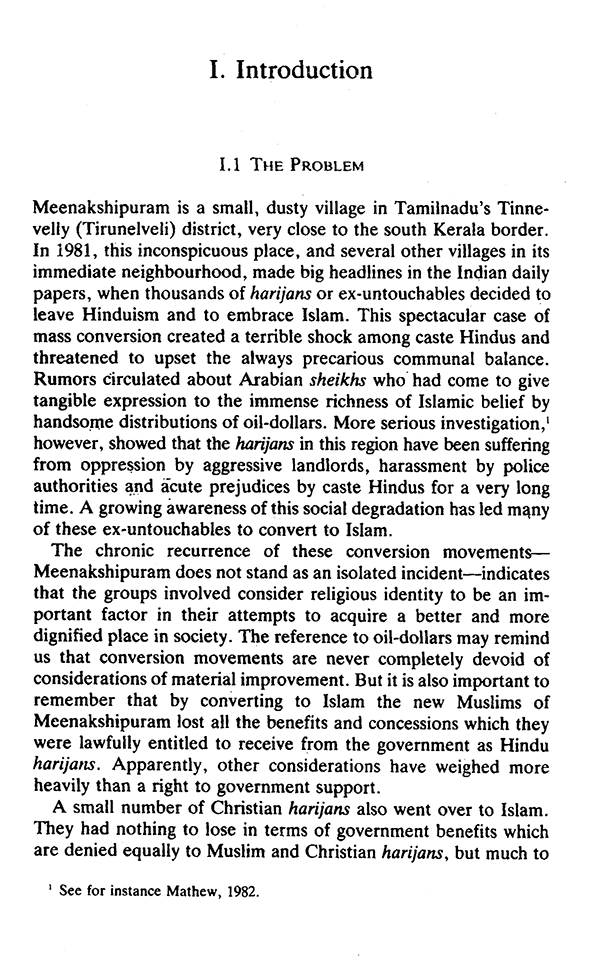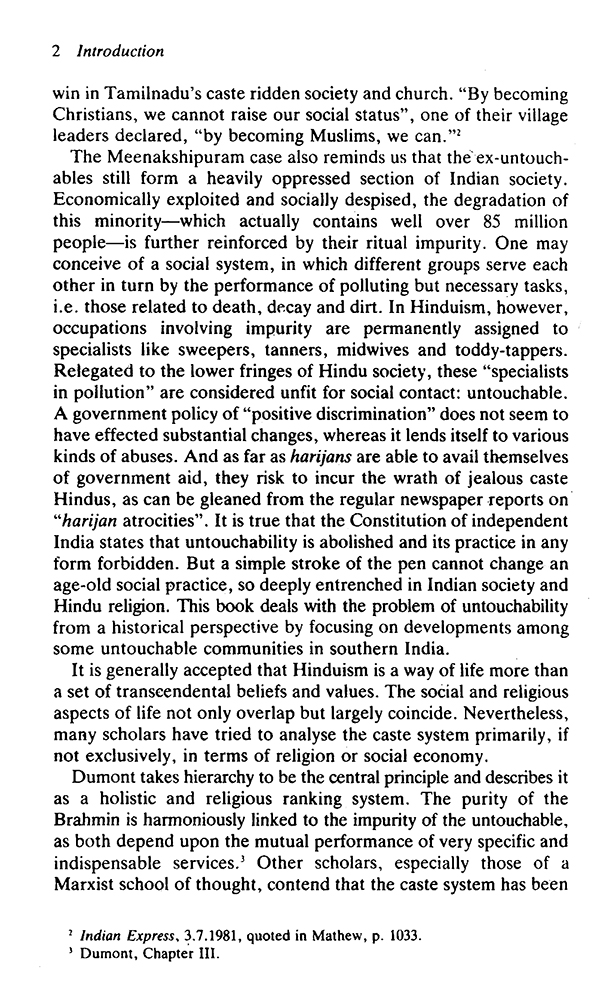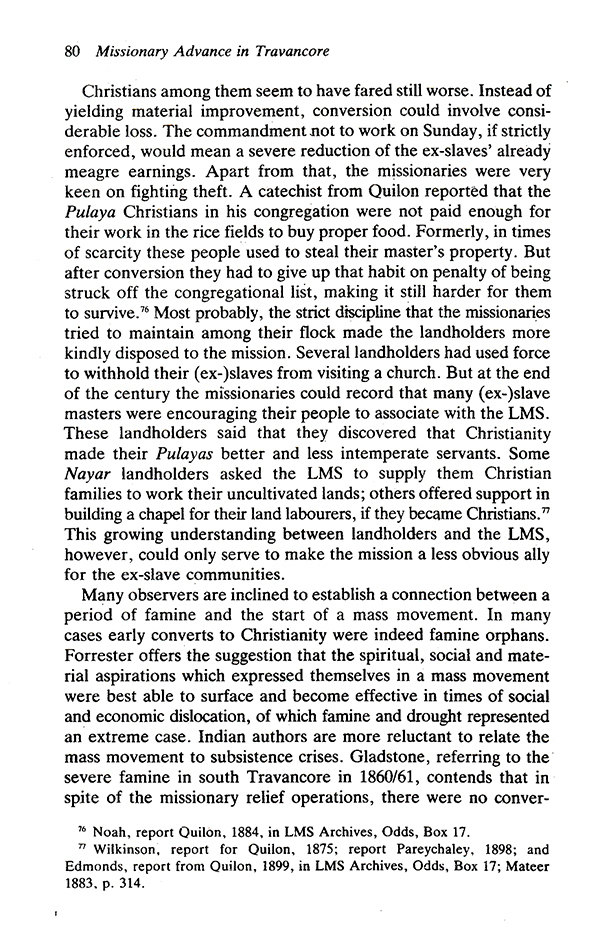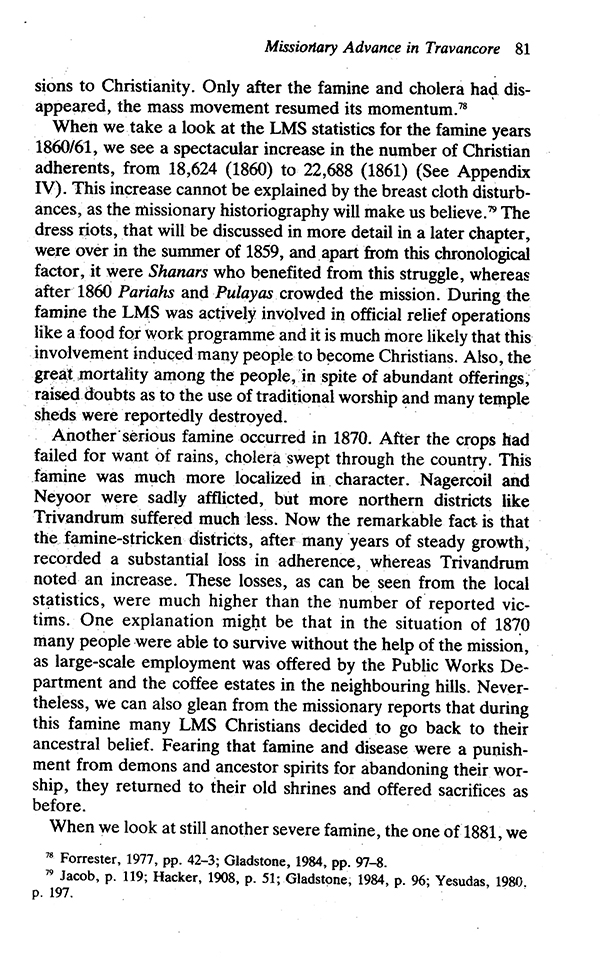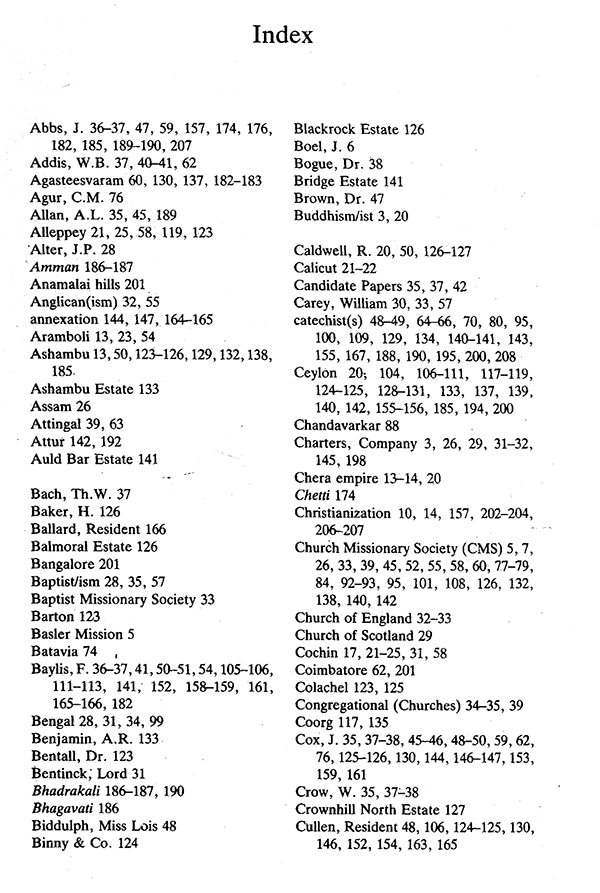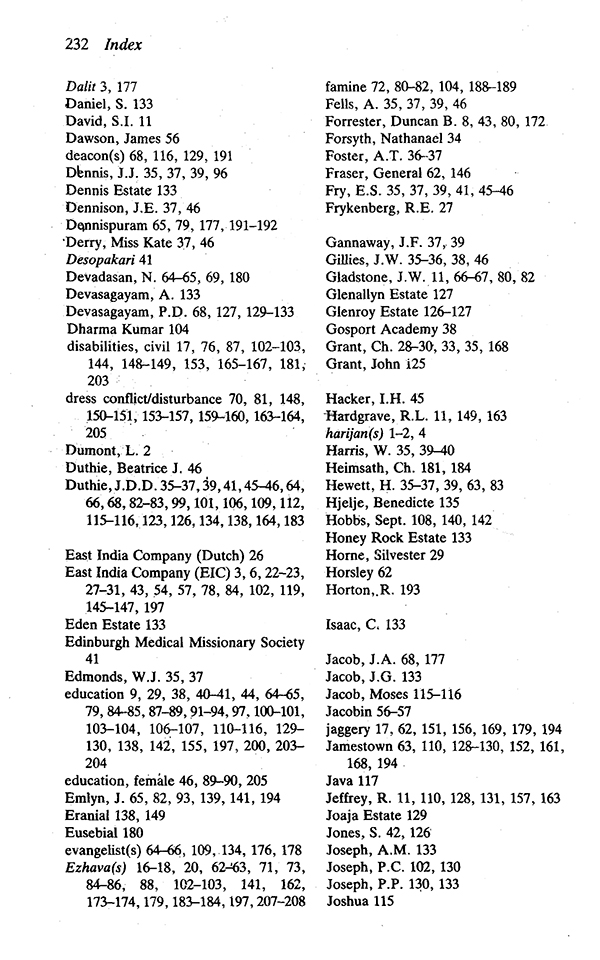
Conversion and Social Equality in India (The London Missionary Society in South Travancore in the 19th Century)
Book Specification
| Item Code: | NAZ124 |
| Author: | Dick Kooiman |
| Publisher: | Manohar Publishers and Distributors |
| Language: | English |
| Edition: | 1989 |
| ISBN: | 9788185054780 |
| Pages: | 254 (9 B/W Illustrations) |
| Cover: | HARDCOVER |
| Other Details | 9.00 X 6.00 inch |
| Weight | 420 gm |
Book Description
Conversion in India should not be narrowed down to an individual moment of divine grace or a Gandhian change of heart. It is closely linked with the social aspirations of groups that suffer from discrimination and oppression. Since religion is supposed to cover all aspects of life, the author argues that for untouchable caste communities a change of religion may serve as an idiom of social mobility, in some respects closely resembling the more general process of Sanskritization.
From the beginning of the nineteenth century the Christian missionaries' preachings attracted a large number of poor untouchables who tended to understand the Gospel in terms of their immediate needs and interests. These missionaries were in search of 'pure' converts and often felt disappointed when they found that material considerations played a large part in conversion movements. However, learning by experience they came to show a growing awareness that concern for the material welfare of the people constituted a legitimate part of their calling.
The book analyses the confrontation between Evangelical missionaries from Victorian England and low caste communities in the Hindu social order, in the social setting of Travancore, an Indian native state tucked away in the south-west corner of the Indian peninsula. However, the problems like social stratification and cultural change dealt with by the author in the book concern a much wider field than Travancore or India alone. The author has used an impressive amount of missionary source material hitherto largely unexplored, both in England and India.
Dick Kooiman studied Asian history and sociology in Amsterdam. His Ph.D. thesis was on the emergence of labour organizations in the Bombay textile mills before the First World War (1978). As associate professor he has been teaching Asian history in the Amsterdam Free University, publishing widely on plantations, christian missions and ceremonial traditions at the Indian princely courts. He retired from academic life in 2007.
Monographs are seldom the work of one single person. This book is no exception. Several institutions, academic and non-academic, and their personnel have rendered valuable assistance to make the writing of this book possible.
First of all I would like to mention the Department of Cultural Anthropology and Sociology of Non-Western Peoples at the Amsterdam Free University, where I am working as a Reader in South Asian history. Participation in this Department's joint re-search program 'Religion, Power and Development' stimulated my interest in the socio-economic effects of conversion movements among untouchables in India and enabled me to benefit from discussions among my fellow-researchers. Colleagues like Pim Schoorl, Hans Tennekes, Matthieu Schoffeleers and Philip Quarles van Ufford saw parts of this book in draft and offered suggestions for improvement. The annual meetings of the Dutch Contact-Group for Tropical Asia (KOTA) proved a useful plat-form to submit draft texts as conference papers to the critical comment of researchers from other universities, and parts of chapters III, IV, V and VIII saw already the light of day in a modified form as contributions to the Indian Church History Review (Bangalore), the Economic and Political Weekly (Bombay), and the Journal of Kerala Studies (Trivandrum).
The Faculty of Socio-Cultural Sciences of the Amsterdam Free University granted me the necessary funds to consult historical source material in London and Bangalore. In London I spent many hours in the libraries of the India Office and the British Museum. Mrs. Rosemary Seton and Rev. J.T. Hardyman proved patient guides and advised me in finding my way in the archives of the London Missionary Society, now on deposit in the London School of Oriental and African Studies. Barrie D. Scopes, general-secretary to the Council for World Mission, the successor organization to the London Missionary Society, kindly permitted me to use the Council's remaining files and reports, and to reproduce old photos from its archives for publication. Mrs. Rosemary Keen drew my attention to the Hobbs Papers on the 'Ceylon Tamil Cooly Mission' in the collection of the Church Missionary Society, now in Birmingham.
**Contents and Sample Pages**